Gallery
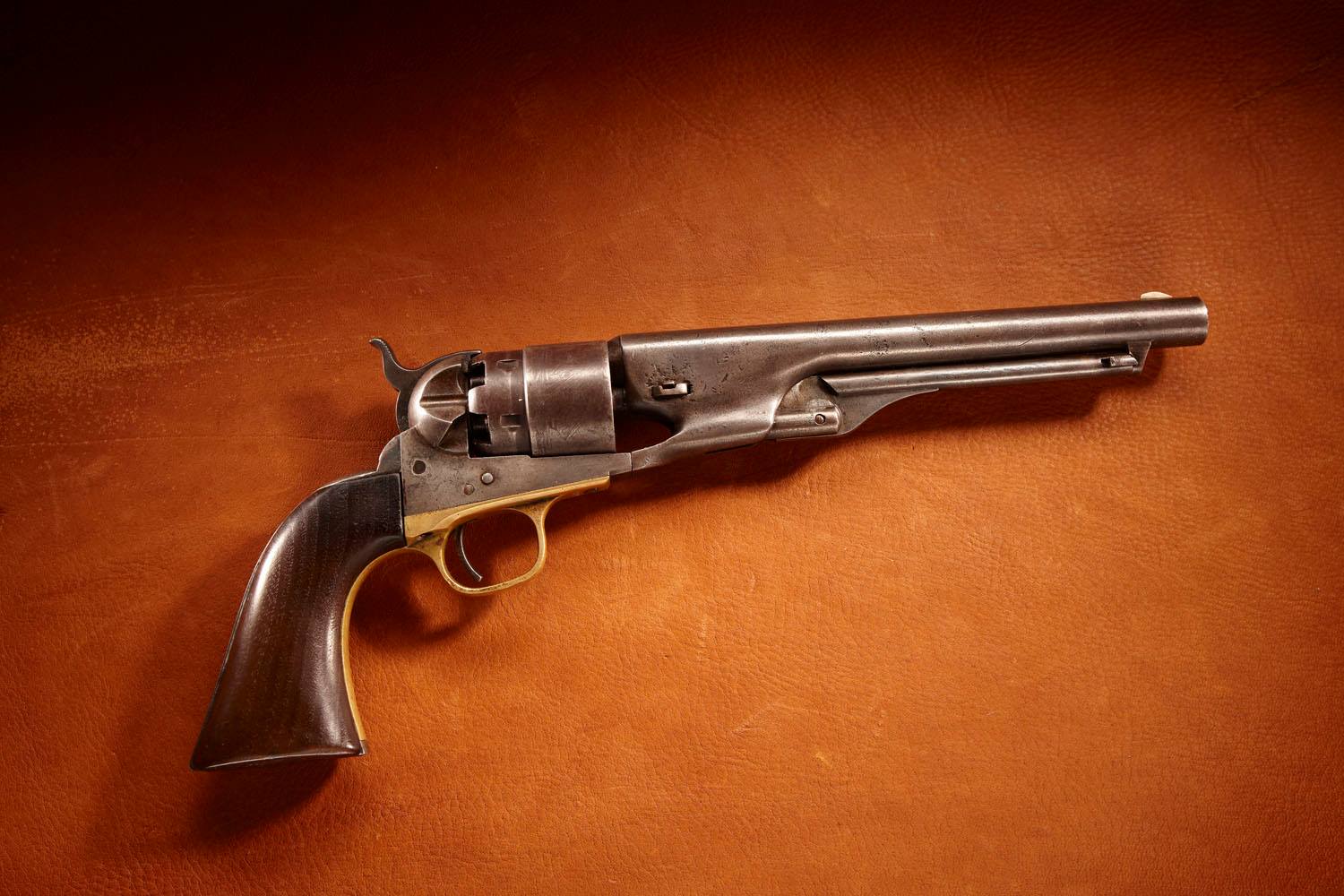
1 of 1
Mosby Ranger’s Colt
Mechanically, there is nothing remarkable about this Colt 1860 Army Model. More than 100,000 of them were carried by Union soldiers during the Civil War. However it is the story attached to this revolver that makes it so remarkable.
In March 1863 the notorious Confederate guerrilla John Singleton Mosby and his Rangers conducted a raid at Fairfax, Virginia, (home of NRA Headquarters) capturing Union General Edwin Stoughton and a number of horses. In response to news of the raid, President Abraham Lincoln remarked, “I can make more generals, but horses cost money.”
Despite making off with some very valuable captured supplies and a General, one of Mosby’s Rangers lost something: this Colt 1860 Army Model revolver. It was picked up in the streets of Fairfax and later presented to retiring Union Lieutenant Joseph LeBeffe.
In March 1863 the notorious Confederate guerrilla John Singleton Mosby and his Rangers conducted a raid at Fairfax, Virginia, (home of NRA Headquarters) capturing Union General Edwin Stoughton and a number of horses. In response to news of the raid, President Abraham Lincoln remarked, “I can make more generals, but horses cost money.”
Despite making off with some very valuable captured supplies and a General, one of Mosby’s Rangers lost something: this Colt 1860 Army Model revolver. It was picked up in the streets of Fairfax and later presented to retiring Union Lieutenant Joseph LeBeffe.
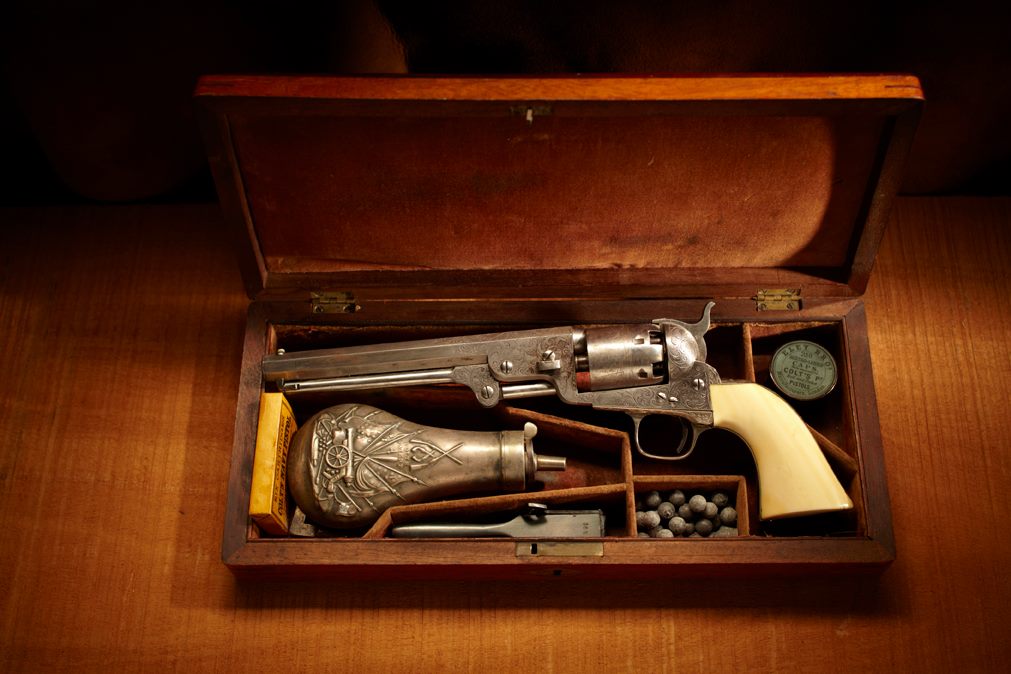
1 of 1
General Hawley’s Colt
The Colt Model 1851 Navy was a very popular cap-and-ball revolver. Nearly 185,000 had been produced in Colt's Hartford, Connecticut, factory by the end of the Civil War in 1865 and the final tally would reach more than 200,000.
Samuel Colt was known for giving highly engraved guns to various high-profile individuals of his era. This cased and engraved Colt Model 1851 Navy revolver was given to Joseph Hawley, editor of the Hartford Evening Press. Hawley later went on to become the 42nd governor of the state of Connecticut.
During the Civil War, Hawley attained the rank of brevet major general of volunteers. After the Civil War, he served two terms in the U.S. House of Representatives and was a U.S. Senator for four terms from 1881 to 1905.
Samuel Colt was known for giving highly engraved guns to various high-profile individuals of his era. This cased and engraved Colt Model 1851 Navy revolver was given to Joseph Hawley, editor of the Hartford Evening Press. Hawley later went on to become the 42nd governor of the state of Connecticut.
During the Civil War, Hawley attained the rank of brevet major general of volunteers. After the Civil War, he served two terms in the U.S. House of Representatives and was a U.S. Senator for four terms from 1881 to 1905.
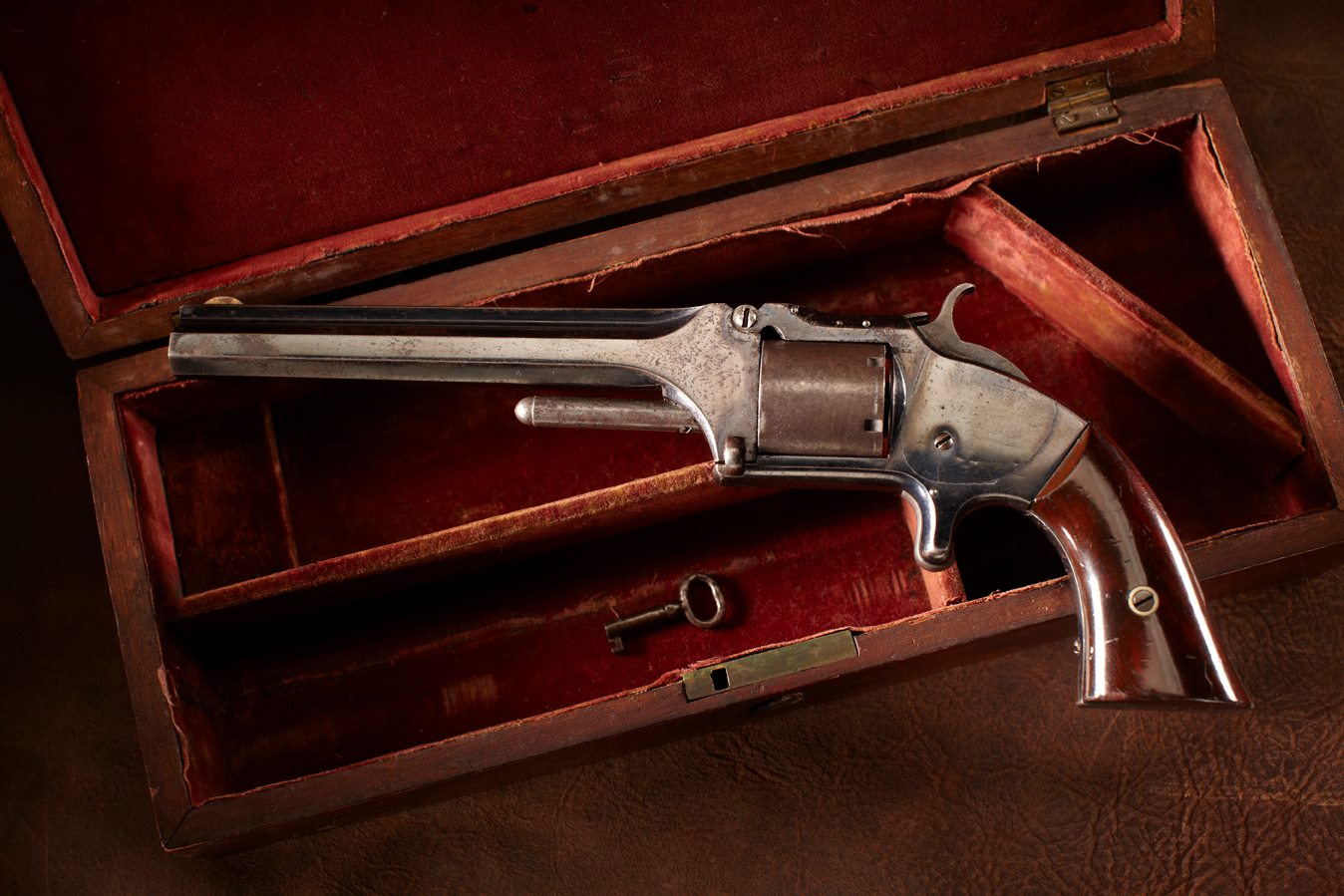
1 of 1
General Sherman’s Smith & Wesson
This six-shot .32 rimfire revolver was a popular sidearm with officers and enlisted men alike during the Civil War. Even General George Armstrong Custer owned a pair of them. The gun’s popularity continued into the 1870s as well. “Wild Bill” Hickok was carrying one the night he was shot and killed in Deadwood in August 1876. During its 13 year production run, more than 77,000 were produced.
This cased Model No. 2 is said to have belonged to well-known Union General William Tecumseh Sherman. The backstrap is inscribed, “Presented to Gen. W. T. Sherman / by officers of his personal staff 1869.”
This cased Model No. 2 is said to have belonged to well-known Union General William Tecumseh Sherman. The backstrap is inscribed, “Presented to Gen. W. T. Sherman / by officers of his personal staff 1869.”
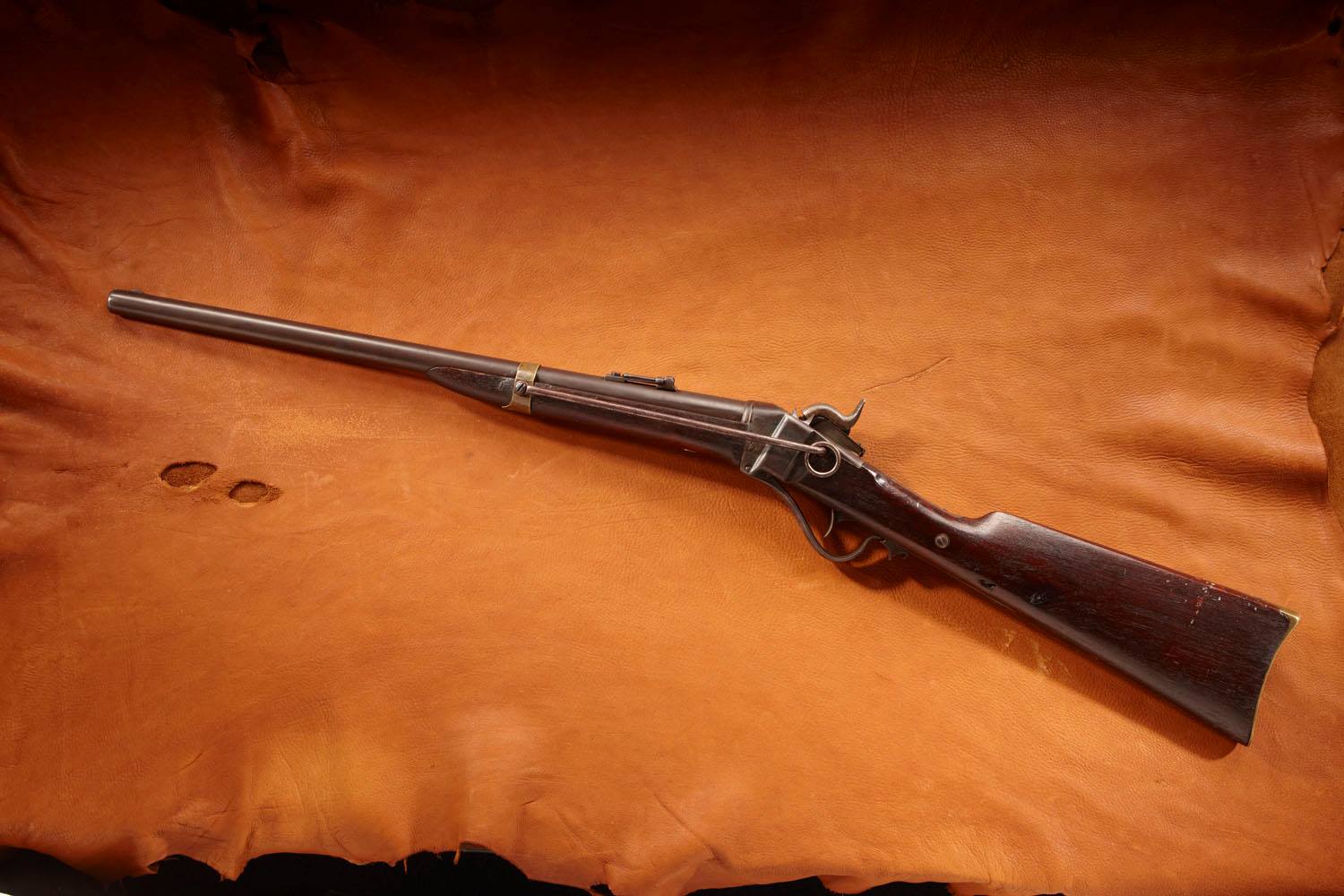
1 of 1
John Brown’s Beecher’s Bibles
This Sharps carbine was one of more than 900 purchased by New England abolitionists and shipped out to Free Soil settlers in Kansas in the 1850s. Shipped in crates marked as carrying Bibles, the carbines got nicknamed as “Beecher’s Bibles,” after abolitionist preacher Henry Ward Beecher.
A total of 75 Sharps carbines had their serial numbers read into the Congressional Record because they had found their way to Harper’s Ferry with John Brown during his raid in October 1859. Sharps recorded serial numbers on the tang and on the underside of the barrel. The tang serial number has been removed from this gun, but the serial number under the barrel remains. This is verifiable proof that this particular one of “Beecher’s Bibles” was present during John Brown’s infamous raid.
A total of 75 Sharps carbines had their serial numbers read into the Congressional Record because they had found their way to Harper’s Ferry with John Brown during his raid in October 1859. Sharps recorded serial numbers on the tang and on the underside of the barrel. The tang serial number has been removed from this gun, but the serial number under the barrel remains. This is verifiable proof that this particular one of “Beecher’s Bibles” was present during John Brown’s infamous raid.
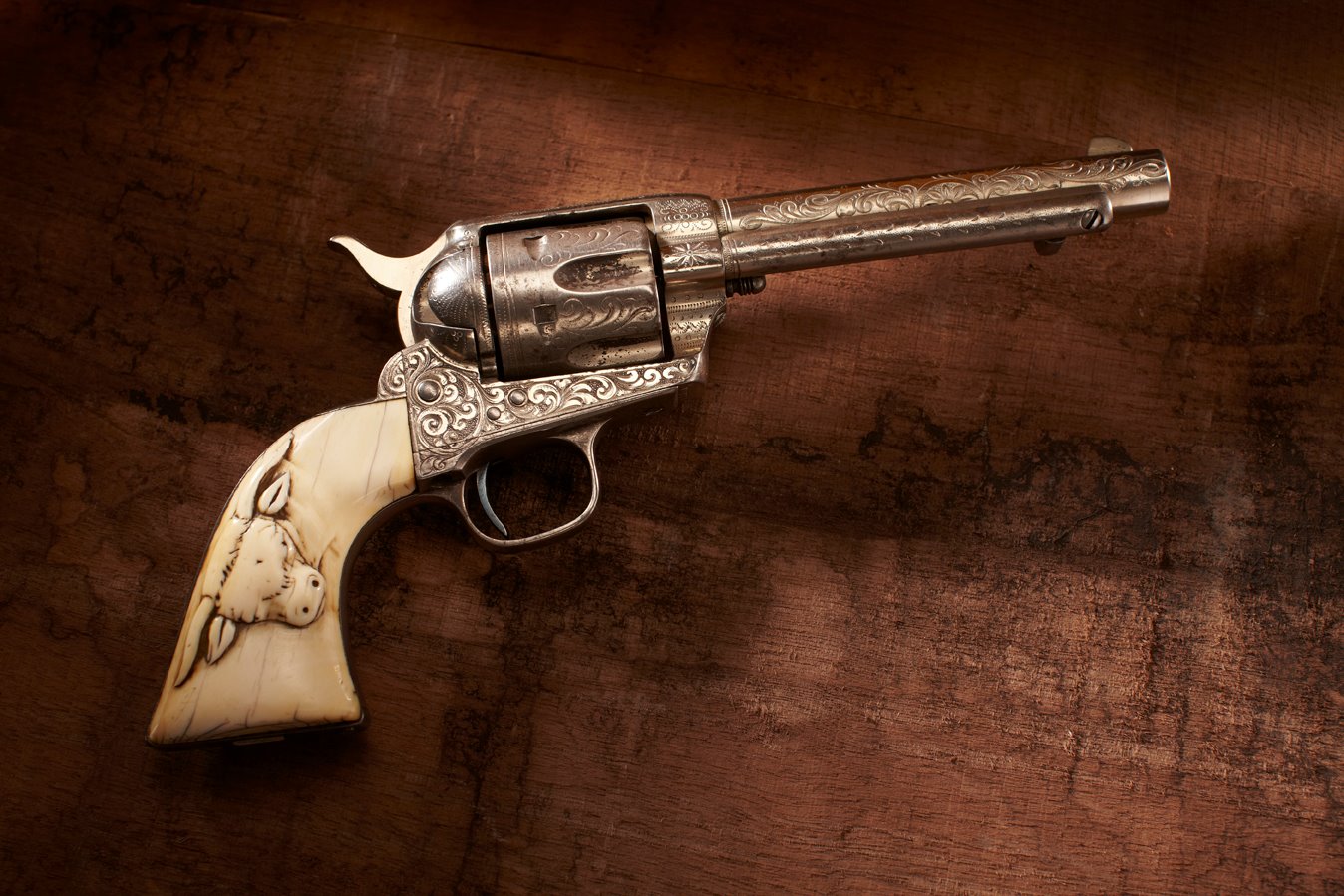
1 of 1
Black Jack's Colt
This gun comes from the days of the infamous Hole in the Wall Gang, when many railroad robberies took place in the American Southwest. One of the most notorious outlaws of the era was Thomas Edward “Black Jack” Ketchum, who robbed his last train August 16, 1899, near Raton Pass on the Colorado / New Mexico border.
Ketchum’s solo holdup of the Colorado and Southern Railroad, and the later robbery of a railroad company store by members of his gang in Trinidad, Colorado, where a deputy sheriff was killed, energized a massive manhunt that soon had Ketchum behind bars. Ketchum’s six-gun and ivory-gripped, engraved Colt revolver was shown in period photographs before his trial and eventual hanging on April 26, 1901.
Ketchum’s demise was gruesome – his head was pulled off by the hangman’s noose. While the bandit received an $8.50 funeral, his embellished handgun was taken by John James Dallison, the Trinidad chief of police. Passed down through the Dallison family generation to generation, this .45 Colt revolver was donated to the National Firearms Museum in 2011.
Ketchum’s solo holdup of the Colorado and Southern Railroad, and the later robbery of a railroad company store by members of his gang in Trinidad, Colorado, where a deputy sheriff was killed, energized a massive manhunt that soon had Ketchum behind bars. Ketchum’s six-gun and ivory-gripped, engraved Colt revolver was shown in period photographs before his trial and eventual hanging on April 26, 1901.
Ketchum’s demise was gruesome – his head was pulled off by the hangman’s noose. While the bandit received an $8.50 funeral, his embellished handgun was taken by John James Dallison, the Trinidad chief of police. Passed down through the Dallison family generation to generation, this .45 Colt revolver was donated to the National Firearms Museum in 2011.

1 of 1
The Ferguson Rifle
The Ferguson rifle was the first breech-loading rifle ever adopted by a military. It features a unique dropping breech that accepts its ammunition: a .63 caliber round-ball. About 100 of them were made in 1777 to equip a company of riflemen raised by the inventor of the rifle, British Major Patrick Ferguson.
Major Ferguson's riflemen used the guns to good effect at Brandywine and Little Egg Harbor, but historians are still debating their use at King's Mountain, where Major Ferguson was killed in 1780. Only two original military Ferguson rifles are known to survive. They are on exhibit at Morristown, NJ and Milwaukee, WI. The National Firearms Museum’s Ferguson is one of the very few reproduction guns in our collection.
Major Ferguson's riflemen used the guns to good effect at Brandywine and Little Egg Harbor, but historians are still debating their use at King's Mountain, where Major Ferguson was killed in 1780. Only two original military Ferguson rifles are known to survive. They are on exhibit at Morristown, NJ and Milwaukee, WI. The National Firearms Museum’s Ferguson is one of the very few reproduction guns in our collection.

1 of 1
The Colt Gatling Gun of San Juan Hill
While troops prepared to invade Cuba in 1898 during the Spanish-American War, West Point graduate John H. Parker, a 1st lieutenant of the 13th US infantry, received approval to create a mobile Gatling gun unit for heavy cover fire. A relatively new technology at the time, Gatling guns had only seen limited use in the American Civil War.
On July 1, 1898, Parker’s now-famed artillery unit was put to the test as US Expeditionary Forces advanced on the heavily fortified San Juan Heights ridgeline outside the Spanish-occupied port of Santiago. Sweeping the summit with over 6,000 rounds of continuous fire, the unit's suppressing barrage allowed US troops to successfully take the hill.
This Colt model 1895, serial number 1040, was one of the four Gatlings under the command of Lieutenant John Parker during the Battle of San Juan Hill.
On July 1, 1898, Parker’s now-famed artillery unit was put to the test as US Expeditionary Forces advanced on the heavily fortified San Juan Heights ridgeline outside the Spanish-occupied port of Santiago. Sweeping the summit with over 6,000 rounds of continuous fire, the unit's suppressing barrage allowed US troops to successfully take the hill.
This Colt model 1895, serial number 1040, was one of the four Gatlings under the command of Lieutenant John Parker during the Battle of San Juan Hill.

 More Like This From Around The NRA
More Like This From Around The NRA



